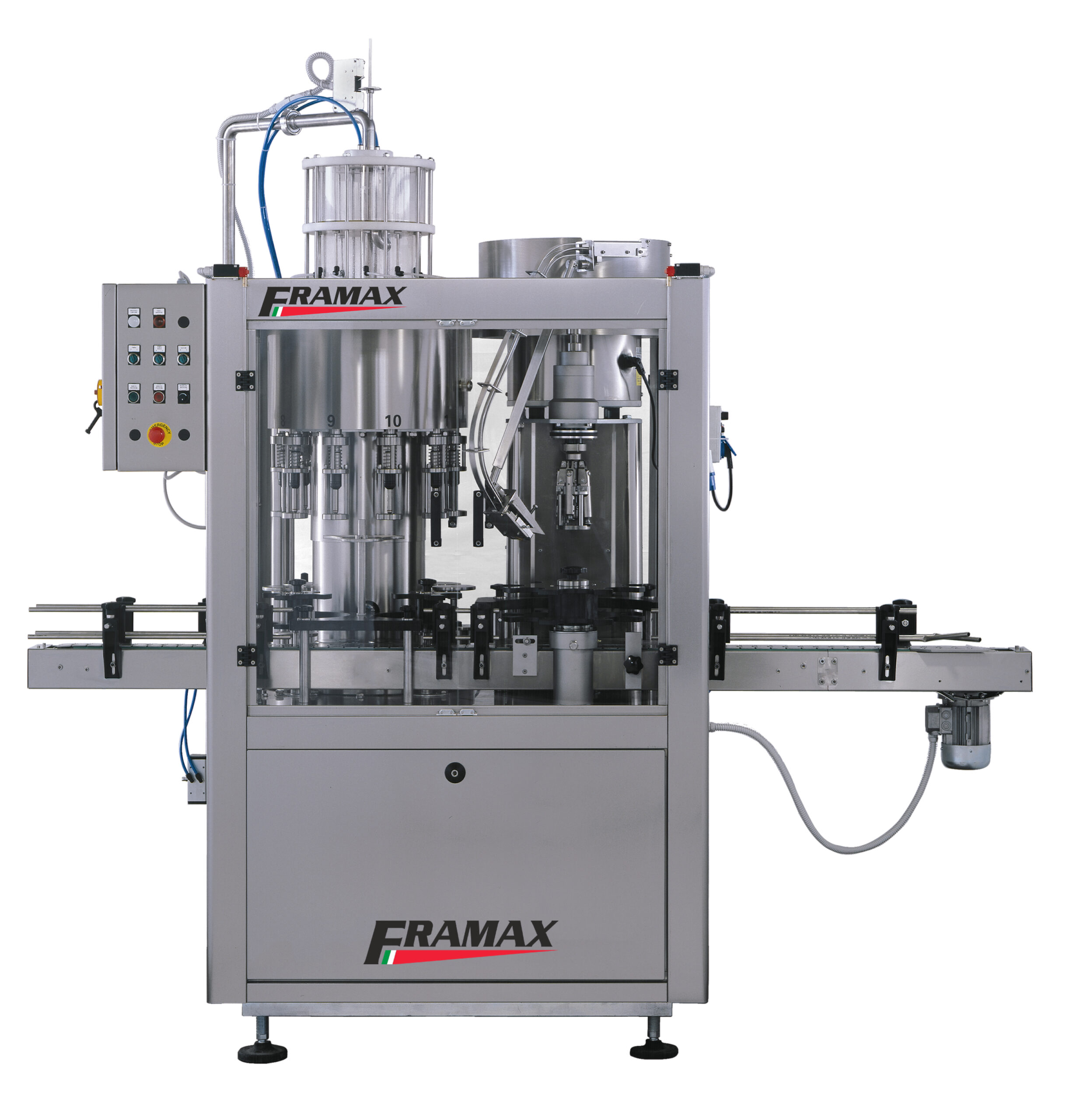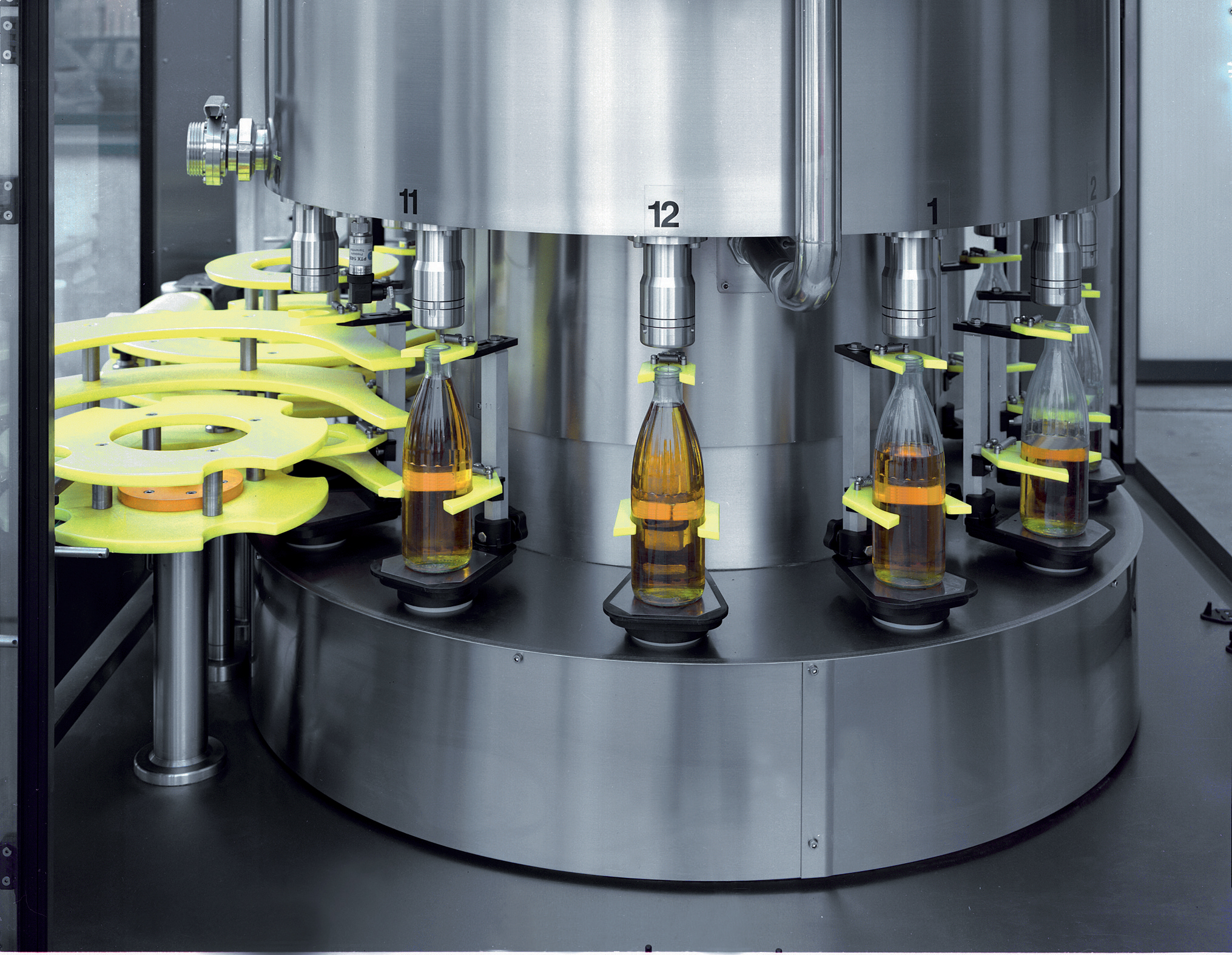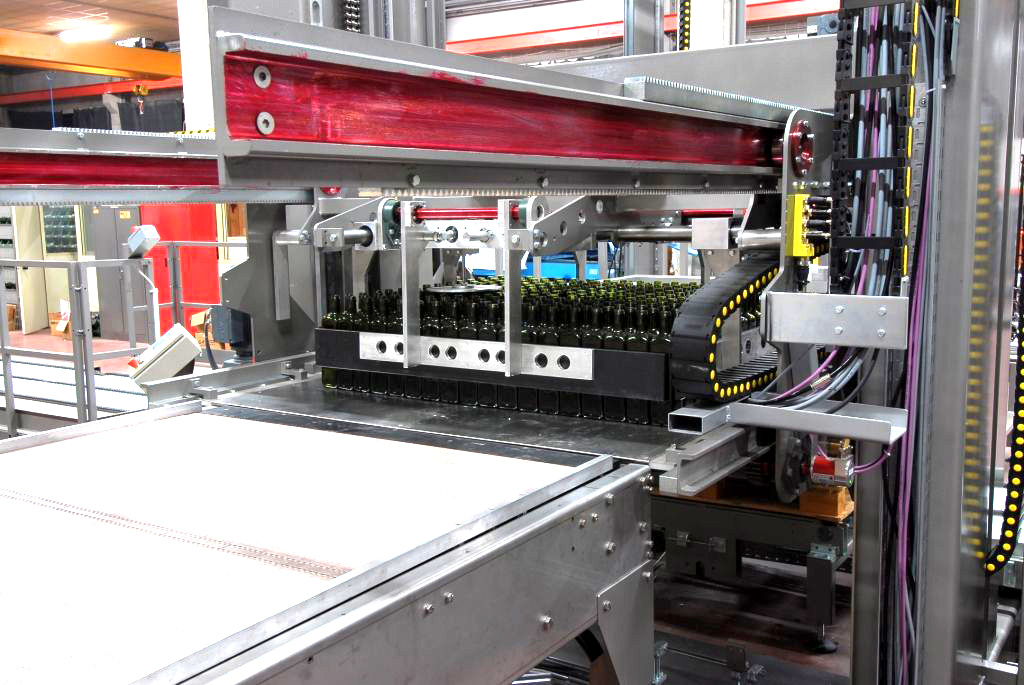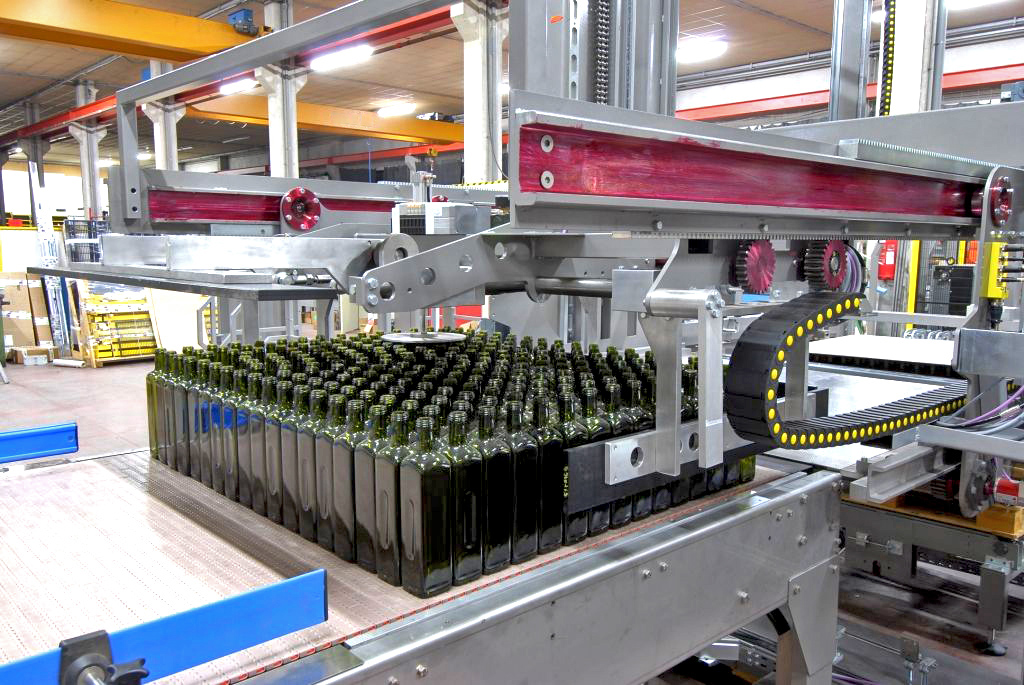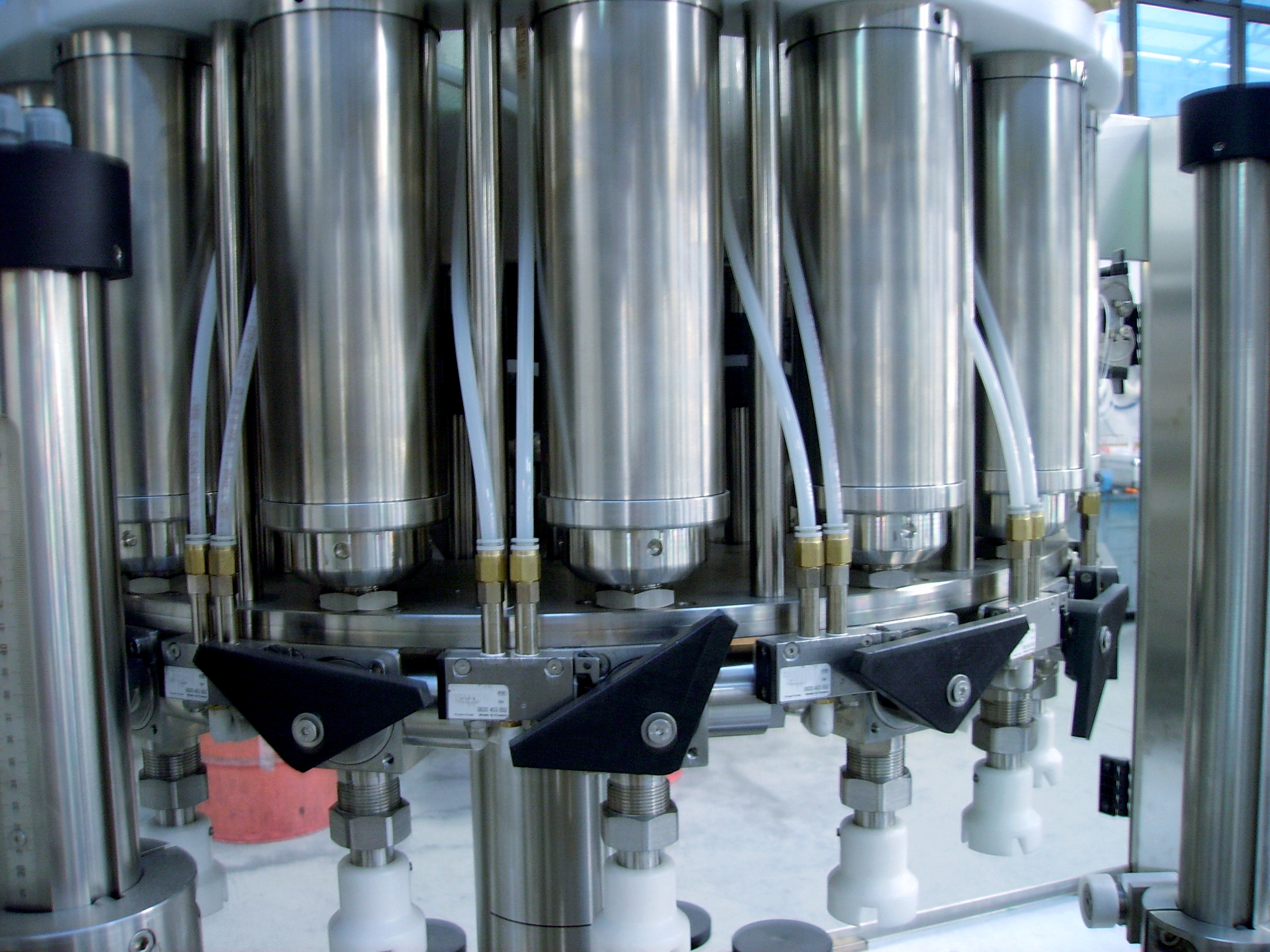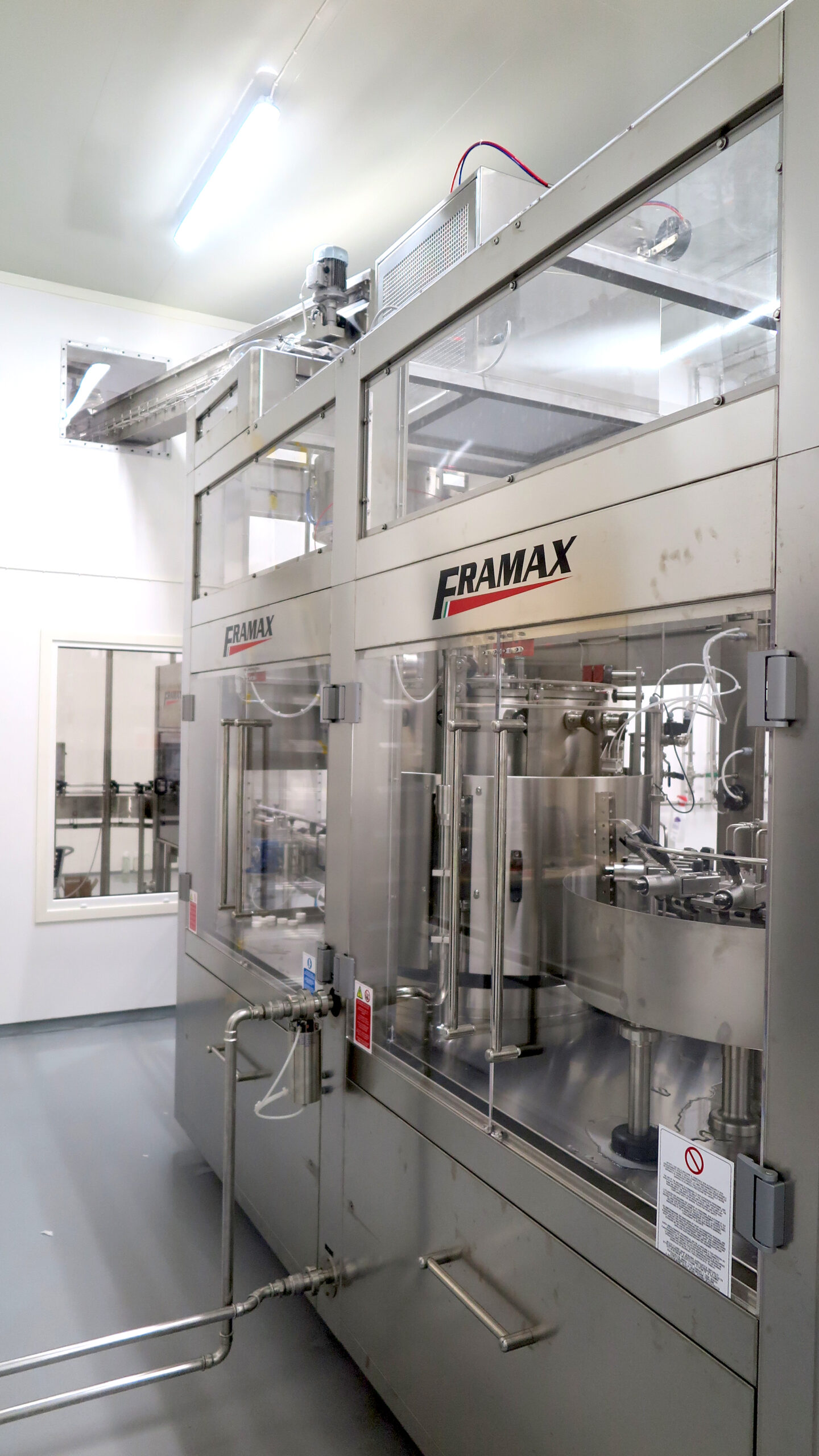Edible Oils
-
A variety of filling systems for dense products such as edible oils are available for filling various types of containers from glass bottles to PET and cans, ranging from the high vacuum filling system to positive pressure filling, volumetric piston filling, net weight filling and flowmeter system.
Such versatility enables us to supply filling lines capable of processing a vast range of different bottle designs commonly used for “boutique” olive oils, as well as the traditional packaging. Framax can supply customers with a tailor made solution from small semiautomatic equipment to the high speed bottling and packaging lines.
Our bottling machines can process many types of bottles (glass, PET, aluminum, polycarbonate, etc.) in a wide range of sizes and shapes.
Our capping units are suitable for various different types of caps such as crown, plastic pre-threaded, aluminum ROPP, ring pull, natural cork, etc…
Our canning machines can process different types of cans and ends (standard, slim, sleek, etc.).
Filling systems:
-
Electronic Volumetric Flow Meter
Electronic Volumetric flow meter filling system.
These systems assure maximum dosing precision and do not require any maintenance.
Thanks to the extremely small number of functional elements, the filling machine can be sanitized very easily and the Electronic Volumetric filling allows optimized filling under a microbiological profile.
The system works without pressure in the bottle and with a light positive pressure inside the filler bowl, allowing to process both high density and liquid products in containers of different materials.
The filling is controlled by the PLC that gives the go-ahead to start the filling when the sensor detects the presence of the bottles.
The electronic dosing devices with mass or magnetic flow meters show that the preset filling volume has been reached and control the closing of the valve, allowing a dosing precision of 0,2%.
As a result we obtain a precise volumetric filling and a microbiological safety. -
Volumetric (or piston)
Volumetric (or piston) filling system guarantees that the container is filled with an exact quantity of product, having a maximum tolerance of +/- 1,5 cc using 1 litre cylinders.
This result is obtained regardless of the product’s thickness and of the differences in actual capacity between containers of the same type and size.
Therefore piston filling is the correct choice for applications where accuracy of actual volume contained in the bottles is important, or in case of filling dense products into plastic containers.
The filling system consists in two steps: during suction, the product passes from the tank to the metering chamber through a three-way valve which measures the product thanks to its piston-based operating principle, according to a preset quantity.
To empty the chamber, the three-way valves activates a pneumatic valve controlling the piston: the product is pushed out of the cylinder into the container.
It is possible to adjust the filling speed in the top portion of the container, where the neck must be filled slowly to prevent foaming or spillage. -
Net Weight
Net weight filling system is used for various types of still products including thick and viscous liquids, such as vegetable oils, detergents, liquid soaps, etc into containers of any kind including soft plastic material such as PET or HDPE bottles.
The advantage of this system is that is very gentle on the product and allows extremely precise net weight measurement, regardless of the empty container weight variation. -
Positive Pressure
Positive Pressure filling system is used for thick and viscous liquids, such as vegetable oils, syrups, sauces, etc into containers of any kind including soft plastic material such as PET bottles.
As opposed to the gravity or low vacuum system, the filling takes place by creating a positive pressure inside the filler bowl, allowing the product to flow from the filling tank to the containers more easily. -
Low Vacuum-Gravity
Low vacuum-gravity filling systems are recommended for still, non-dense products such as for example still water, wine, alcoholic beverages (vodka, whiskey, brandy, etc), chemical products and generically any kind of flat non viscous liquids.
Various models of filling valves are available within this category, specifically designed to cater for the filling level requirements, bottle shape, neck shape and product.
Several optional features are available such as the “millimetric adjustment of the filling level” controlled directly from the user interface panel, air return outside the filling tank (to avoid the air from the bottles contaminating the product in the filler bowl), centralized level regulation and more.



